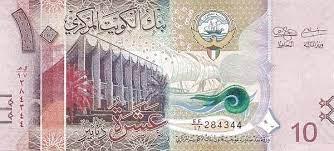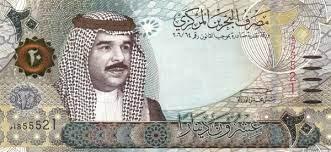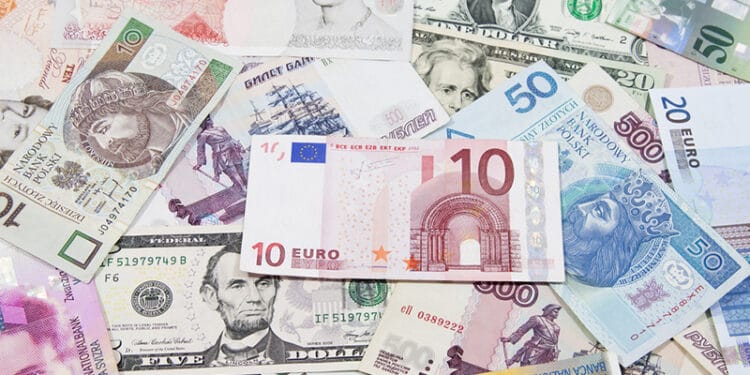Are you wondering what the strongest currency is in 2021? These statistics might be surprising for some to learn.
For anyone who has never traded forex, they’ll likely believe the strongest in purchasing power is probably the US dollar, euro, or British pound. While each of these countries is esteemed for their highly developed economies, their currencies are surprisingly down the list of being the most expensive globally.
Forex traders are always concerned about exchange rates by comparing how much of one currency unit equals another. Although several of the entrants in this forthcoming list come as no surprise, the first few consist of currencies in lesser-known countries.
This article will look at the ten strongest currencies in 2021 based on how many US dollars are presently required to buy one unit of that currency.
1. Kuwaiti dinar (KWD)

The Kuwaiti dinar may stun many, but it is officially recognized as the strongest currency in forex for 2021 and has been for some time. KWD has rarely fallen under $3.2 for 1 KWD in recent history. At the time of writing, one will need $3.31 to purchase one Kuwaiti dinar.
Despite being a relatively small country with a population of less than 4.5 million, Kuwait is technically fifth for the wealthiest countries globally according to gross national income per capita. Among its prosperous economic resources, oil exports are among the primary drivers in the dinar being so prized.
Kuwait boasts the sixth biggest oil reserves globally, accounting for 10% of the entire supply. The nation also holds billions of barrels of petroleum and cubic feet of natural gas, which are 100% state-owned. Interestingly, the dinar was pegged to the US dollar since 2003, but the government reverted to a floating exchange rate from 2007.
Fun fact: Technically, the strongest currency is the Seborgan Luigino (SPL), the money used by the Principality of Seborga, a micronation located near France. SPL is pegged to the US dollar at 1 SPL for every $6. Due to the tiny size and obscurity of the state, it is not formally identified outside of its borders.
2. Bahraini dinar (BD)

The BD shares many similarities with the Kuwaiti dinar. Bahrain is also a predominantly Arab nation, albeit with a population of less than two million, all scattered in a small archipelago of 50 natural islands. The Bahraini dinar has been pegged to the US dollar at 1 BHD for every $2.659 since 1980.
The CBB (Central Bank of Bahrain) has made it their monetary policy to maintain a fixed exchange rate to foster a stable currency and reasonably low inflation, which subsequently provides immense levels of domestic and foreign investment.
Like Kuwait, much of Bahrain’s wealth is driven by oil and petroleum exports, along with highly matured aluminum, construction, and finance sectors. The World Bank has recognized the nation as a high-income economy since 2001.
3. Omani rial (OMR)

Oman is yet another small-scale, predominantly Arab state renowned for its substantial oil and gas reserves that are amongst the highest globally. Like the Bahraini dinar, the Omani rial maintains a peg to the US dollar at $2.60 for every 1 OMR.
The Central Bank of Oman has preserved this peg since 1986 after it pegged the rial to the US dollar at 1 OMR/$2.895 from 1973 once the Bretton Woods agreement ended. Like most central banks using such a mechanism, the fixed exchange fosters orderly monetary conditions and increased domestic and international trade.
The rest of the top 10 most expensive currencies in 2021
Below is a list of the strongest currencies after the top 3 until the 10th ranked (approximate rates as of 12 July 2021).
| # | Currency | Code | USD conversion rate |
| 4 | Jordanian dinar | JOD | 1.41 |
| 5 | British pound sterling | GBP | 1.38 |
| 6 | Caymanian dollar | KYD | 1.20 |
| 7 | Euro | EUR | 1.18 |
| 8 | Swiss franc | CHF | 1.08 |
| 9 | US dollar | USD | 1 |
| 10 | Canadian dollar | CAD | 0.80 |
Other reasons why Bahrain and Oman’s currencies are valuable
Although Bahrain and Oman aren’t necessarily well-known economic powerhouses, aside from their petroleum and oil exports, their fixed exchange policies are the main reasons their currencies are quite valuable. This attribute makes such nations unique economically.
Having a relatively stable currency alleviates exchange rate fluctuations which are deterrents to foreign investment. On the surface, it does seem difficult for countries to maintain the peg. Fortunately, Bahrain, Omani, and even Jordan have been doing so for decades.
The key is the relationships these regions have with the United States, and understandably so. Bahrain, Omani, and Jordan have to hold substantial reserves of US dollars. Thankfully, this becomes simpler as most of these countries make much of their wealth from oil, principally priced in USD.
Another interesting cause of these high-valued currencies is their denominations are typically 1000 units, where most countries stick with 100.
Final word
One takeaway from this article is that a more powerful currency doesn’t inherently correlate with a better economy. Despite having plenty of naysayers, the US dollar is the world’s reserve money and strikes a balance between being a comparatively strong currency and a popular, highly developed economy.
Fundamental analysts will understand the face value of a currency is irrelevant as each nation technically has the power to price their money at whatever mark within reason. We see this attribute with the two of the top currencies in the Bahraini dinar and Omani rial.
This is why a vast majority of forex traders will stick to countries with prominent economic status and predictable indicators in monetary policies. Nonetheless, surely anyone wouldn’t mind owning a few dinars and exchanging them for US dollars because of the attractive exchange rates!




